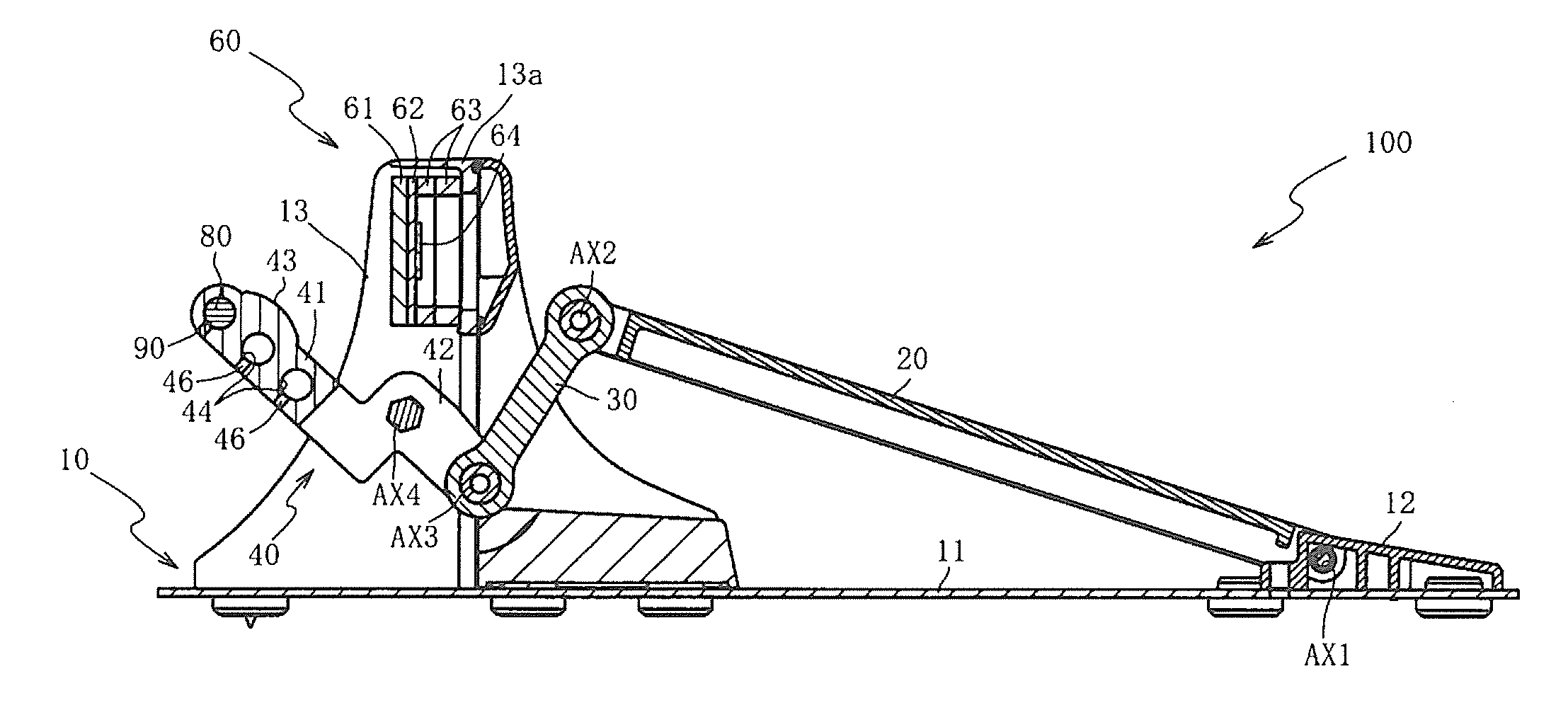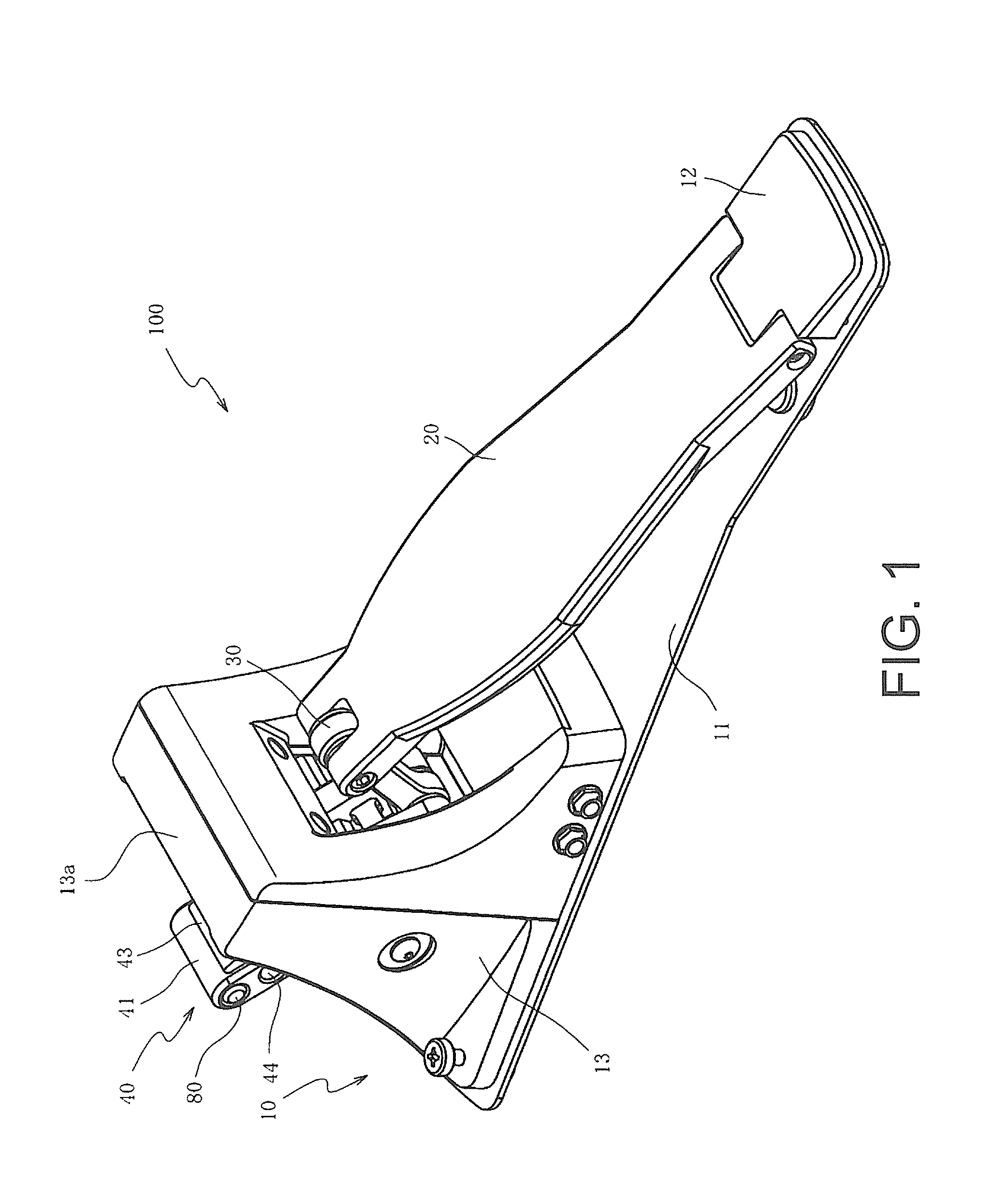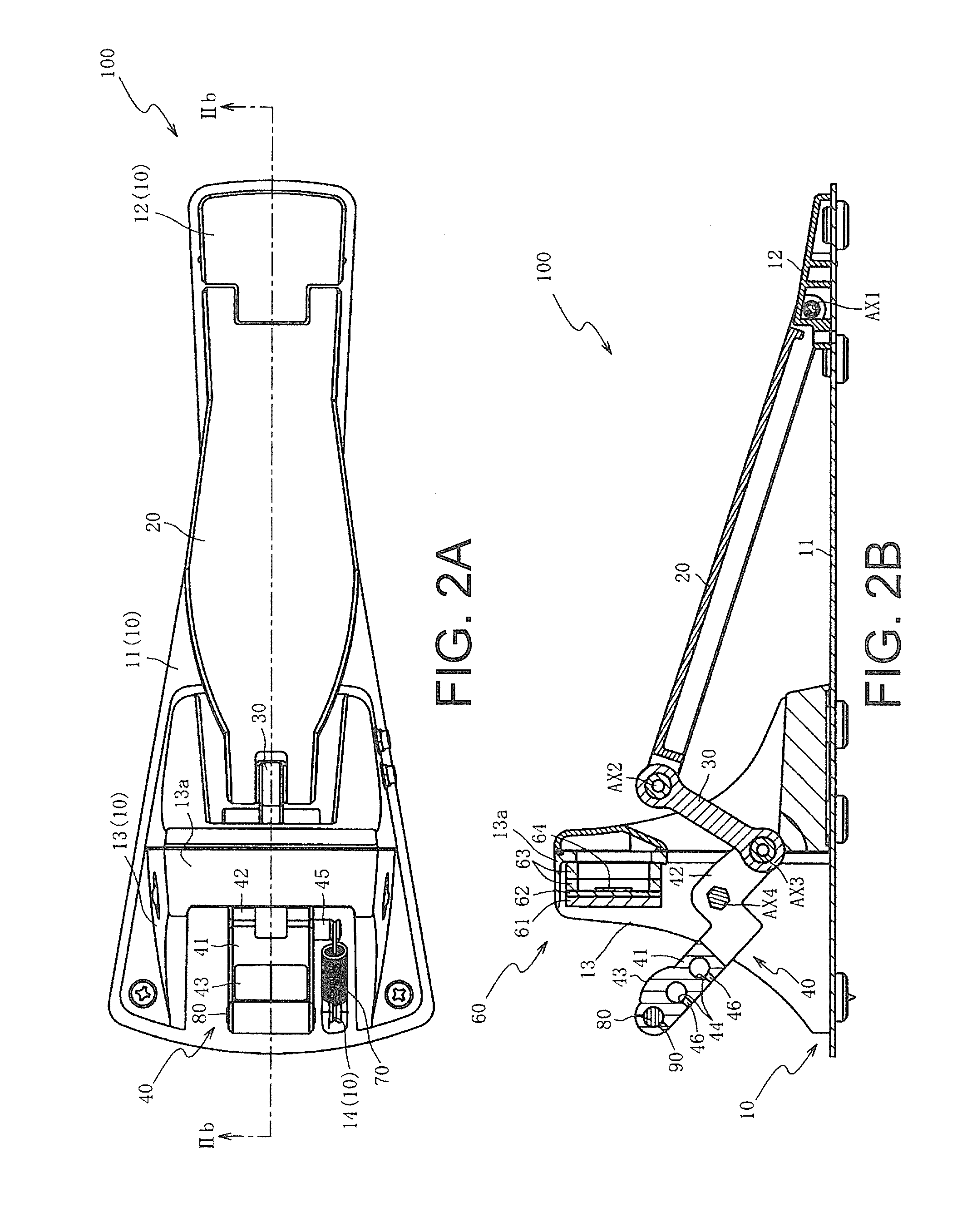Pedal device for musical instrument
- Summary
- Abstract
- Description
- Claims
- Application Information
AI Technical Summary
Benefits of technology
Problems solved by technology
Method used
Image
Examples
second embodiment
[0100]FIG. 6A is a partially enlarged front view of the rotating member 240 of the FIG. 6B is a partially enlarged cross-sectional view of the rotating member 240 taken along the line VIb-VIb of FIG. 6A. FIG. 6A and FIG. 6B illustrate a state where a weight 280 is installed in the upper engaging part 44 and is fixed by a set screw 290.
[0101]As shown in FIG. 6A and FIG. 6B, an insertion hole 246 of the rotating member 240 has a structure different from the structure of the fastening hole 46 of the first embodiment. With the exception of this point, the structure of the rotating member 240 is the same as the structure of the rotating member 40 of the first embodiment.
[0102]The insertion hole 246 is a hole provided for inserting the set screw 290. The insertion hole 246 penetrates through a portion of the main body part 41 between the front surface of the main body part 41 (the outer surface of the rotating member 240) and the engaging parts 44. More specifically, the insertion hole 2...
third embodiment
[0110]FIG. 7A is a partially enlarged front view of the rotating member 340 of the FIG. 7B is a partially enlarged cross-sectional view of the rotating member 340 taken along the line VIIb-VIIb of FIG. 7A. FIG. 7A and FIG. 7B illustrate a state where the weight 280 is installed in the uppermost engaging part 44 and the weight 280 is fixed by the set screw 290.
[0111]As shown in FIG. 7A and FIG. 7B, an insertion hole 346 of the rotating member 340 has a structure different from the structure of the fastening hole 46 of the first embodiment. However, the number of the engaging parts 44 and the number of the insertion holes 346 of the rotating member 340 are different from the number of the engaging parts 44 and the number of the fastening holes 46 of the first embodiment respectively. With the exception of these points, the structure of the rotating member 340 is the same as the structure of the rotating member 40 of the first embodiment.
[0112]The insertion hole 346 is a hole that has...
fourth embodiment
[0117]FIG. 8A is a partially enlarged front view of the rotating member 440 of the FIG. 8B is a partially enlarged cross-sectional view of the rotating member 440 taken along the line VIIIb-VIIIb of FIG. 8A. FIG. 8C is a partially enlarged cross-sectional view of the rotating member 440 taken along the line VIIIc-VIIIc of FIG. 8A. FIG. 8A to FIG. 8C illustrate a state where the weight 80 is installed in the upper engaging part 491.
[0118]In the rotating member 440, as shown in FIG. 8A to FIG. 8C, the fastening hole 46 of the first embodiment is omitted. Moreover, in the rotating member 440, engaging parts 491 are formed in the elastic base body 490 installed inside the main body part 41. With the exception of these points, the structure of the rotating member 440 is the same as the structure of the rotating member 40 of the first embodiment.
[0119]The elastic base body 490 is made of a rubbery elastic material. In addition, the elastic base body 490 has a rectangular shape in the fro...
PUM
 Login to View More
Login to View More Abstract
Description
Claims
Application Information
 Login to View More
Login to View More - R&D
- Intellectual Property
- Life Sciences
- Materials
- Tech Scout
- Unparalleled Data Quality
- Higher Quality Content
- 60% Fewer Hallucinations
Browse by: Latest US Patents, China's latest patents, Technical Efficacy Thesaurus, Application Domain, Technology Topic, Popular Technical Reports.
© 2025 PatSnap. All rights reserved.Legal|Privacy policy|Modern Slavery Act Transparency Statement|Sitemap|About US| Contact US: help@patsnap.com



